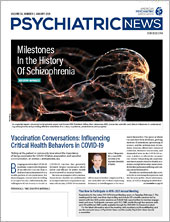Conspiracy theories are not new to the human experience. When Rome burned in the year 64 A.D., a theory arose in the aftermath that the fire had been started by the emperor at the time, Nero. Some claimed that he had even watched the flames destroy the city while playing a lyre from a palace rooftop.
A study in the October 2020 Royal Society Open Science that included responses from people in Ireland, Spain, Mexico, United Kingdom, and United States found that public belief in COVID-19 misinformation was largely uncommon, but in some pockets of the population, conspiracy theories had taken root. About 23% of U.S. respondents agreed with the claim that COVID-19 was created in a Wuhan laboratory, and 18% agreed that the pandemic is “part of a plot to enforce global vaccination.” According to The New York Times, the World Health Organization (WHO) has been fighting both the COVID-19 pandemic and what WHO has deemed an “infodemic” of false and dangerous information.
Conspiracy theories are often circulated in response to moments of crisis and uncertainty, explained Richard Friedman, M.D., a professor of clinical psychiatry and the director of the Psychopharmacology Clinic at Weill Cornell Medical College. While some theories may seem simply strange or innocuous, they can be extremely dangerous. In the most fundamental sense, conspiracy theories take the place of truth and science, Friedman said. “They tend to prevent people from taking measures to protect themselves, if, for example, the conspiracy theory involves a deadly virus like COVID-19,” he said.
Joseph Pierre, M.D., noted that research shows belief in medical conspiracy theories is associated with lower engagement in healthy behaviors. “Then there are the much rarer cases, epitomized in the ‘Pizzagate’ incident, in which conspiracy theory believers have taken it upon themselves to behave violently based on such misbeliefs,” he said in an email.
Pierre is the acting chief of mental health community care systems with the VA Greater Los Angeles Healthcare System and a health sciences clinical professor in the Department of Psychiatry and Biobehavioral Sciences at the David Geffen School of Medicine at the University of California, Los Angeles.
“Those who peddle conspiracy theories—like Holocaust deniers or Alex Jones and his claims about ‘crisis actors’ at Sandy Hook—can also inflict psychological harm on others,” he continued.
Why Do People Believe?
Humans are prone to believe conspiracy theories because they have evolved to make sense of the world quickly to identify danger, Friedman said. It can be useful, for example, to assume a dangerous animal is approaching when grass rustles, even if the cause is usually just the wind. But such a way of viewing the world also means humans are prone to errors.
“People may say, ‘I feel the earth is flat because when I look around, it seems like it’s flat,’ but satellite images of the Earth show us that it’s a sphere,” he said. “It requires cognitive work to overcome our intuitions, which are often wrong.”
Pierre noted that research has consistently shown that about 50% of the population believes in at least one conspiracy theory. There are many reasons for that, he continued, such as the fact that real-life conspiracies do occur from time to time. “Often, conspiracy theories are plausible, and the existence of real conspiracies are held up as evidence for belief,” he said.
Beyond the psychological explanations, “belief can be explained by an overarching ‘socio-epistemic’ model with two components,” Pierre continued. The first is a mistrust in authoritative sources of information, and the second is exposure to and biased processing of misinformation. The current moment of mistrust in institutions of authority, he said, is unprecedented in recent history.
“Mistrust is central to conspiracy theory belief because it requires a rejection of mainstream consensus, conventional wisdom, and official accounts,” Pierre said. “When people start from a place of mistrust, they then become vulnerable to misinformation, including conspiracy theories, which represent a kind of antithesis to authoritative accounts.”
In a Viewpoint published in Psychiatric Services in July, Friedman wrote: “Research shows that higher levels of education are inversely correlated with belief in conspiracies, presumably because education fosters critical thinking and skepticism, which makes it easier to suppress one’s often misleading intuition.”
For Friedman, the fact that some Americans believe in conspiracies—like the COVID-19 pandemic is a hoax or that the Earth is flat—acts as an argument for a stronger education system. “More education makes you more skeptical,” he said. “It requires a lot of cognitive energy to fact-check the world.”
Beliefs May Be Part of People’s Identity
As ancient theories like Nero playing a lyre as Rome burned around him exemplify, conspiracies have existed throughout human history. They tend to be pervasive at different historical times and in different cultures, explained Mark Fenster, Ph.D., J.D., professor and Stephen C. O’Connell Chair at the Levin College of Law at the University of Florida and author of Conspiracy Theories: Secrecy and Power in American Culture.
Usually, conspiracies are circulated by people who are out of power. “That’s what’s different about this moment,” he said. “We have a president who is broadcasting theories widely, some days as soon as he hears them from one of his advisors, followers, or supportive media channels.
“I think for a lot of people, even a belief in science is part of their identity,” Fenster continued. “For some who believe conspiracy theories, the belief comes down to their identity and this commitment to contrarianism.”
For Friedman, the difference between conspiracy theories of the past and those of today is the medium through which the theories are spread. “I think belief in conspiracy theories has gotten worse, and I think the main reason is not that human nature has changed, but the means of information flow has changed,” he said. “Social media have changed everything. People see something online and they think it’s legitimate, [but] the internet is like the Wild West. It’s not edited or curated.”
Working With Patients Who Believe Conspiracy Theories
Psychiatrists have the skills necessary to work with people who believe conspiracy theories, Pierre said. It starts with recognizing and validating their feelings of mistrust. Cognitive-behavioral therapy techniques can be used to take an objective look at the evidence that underlies those beliefs, as well.
Showing empathy is the first step when a clinician encounters patients who believe conspiracies, Friedman said. “Try to understand how they come to believe this and what they’re really thinking,” he said. “Then you ask them, ‘Where did this information come from?’ ”
By gently asking patients about the facts that might counter their belief—such as the science that shows COVID-19 is a very real and dangerous virus—while empathizing with them and trying to find out the root of why they tend to dismiss science and research, patients may feel less isolated or misunderstood, Friedman said.
Finding shared understanding is key, he added. Almost everyone, regardless of whether they trust the science behind COVID-19, can generally agree that living through the pandemic is difficult and scary, for example. And from there, it’s easier to understand why someone might want to believe the virus is a hoax.
“Psychologically, the denial of the seriousness of this serves to ward off the absolutely terrifying nature of the reality, which is that this is a potentially lethal, highly contagious pathogen,” Friedman said. By finding a place of mutual understanding, the clinician can hopefully encourage patients to adopt the healthy behaviors necessary to keep them safe. ■

